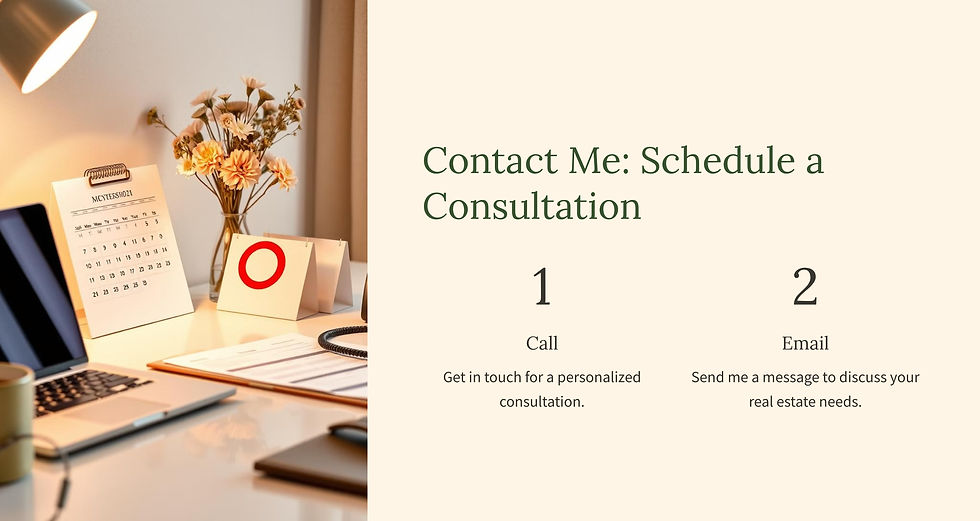How to Create the Perfect Real Estate Website: A Complete Guide
- Krish Gadia
- Jan 7
- 3 min read
“A house is made of bricks and beams; a home is made of hopes and dreams.” In the digital world, your real estate website bridges the gap between those dreams and reality. It’s your first handshake with potential clients, your virtual open house, and your most persuasive sales pitch. But what makes a real estate website not just good, but perfect? Let’s unlock the secrets together.
1. Define Your Target Audience
“You can’t hit a target you can’t see.” Understanding your audience is the cornerstone of success. Are you aiming to attract first-time homebuyers, luxury property seekers, or commercial real estate investors? Crafting a website with their needs and aspirations in mind will set you apart from the crowd.
2. Prioritize Mobile Responsiveness
“Adapt or perish”—this is the golden rule of the internet. With over 50% of web traffic coming from mobile devices, your website must shine on every screen. Ensure your design adjusts seamlessly, so users experience flawless navigation whether they’re browsing on a smartphone, tablet, or desktop.
3. Incorporate a Clean and Intuitive Design

“First impressions are the most lasting.” A clean, professional design reflects your brand’s credibility. Prioritize:
Minimalistic Layouts: Highlight the essentials and let your properties take center stage.
Easy Navigation: Like a well-planned open house, guide users effortlessly to property listings, contact forms, and resources.
Consistent Branding: Your logo, colors, and fonts should weave a consistent story across the website.
4. Showcase High-Quality Visuals
“A picture is worth a thousand words.” In real estate, it might be worth a thousand leads. Use:
Professional photography to showcase properties in their best light.
Engaging video tours and drone footage to captivate your audience.
Virtual staging features to help buyers imagine their future homes.
5. Implement an Advanced Property Search Feature

Your search bar is your website’s compass, guiding users to their dream homes. Offer advanced filters for:
Location
Price range
Property type (residential, commercial, etc.)
Bedrooms, bathrooms, and special features like pools or garages
Allow users to save and share their favorite listings, making their journey seamless and memorable.
6. Add Interactive Features
“Tell me, and I forget. Show me, and I remember. Involve me, and I understand.” Interactive features engage users and keep them coming back:

Mortgage Calculators: Help clients envision affordability.
Map Integration: Highlight property locations alongside nearby amenities.
Live Chat Support: Provide instant answers to pressing questions.
7. Optimize for Search Engines (SEO)
“The best place to hide a dead body is page two of Google search results.” To avoid obscurity, focus on SEO:
Keyword Research: Use terms like “homes for sale in [city]” to attract the right audience.
Local SEO: Claim your Google My Business profile and sprinkle in local keywords.
Fast Loading Speeds: Compress images and use robust hosting to ensure speed.
Fresh Content: Regularly update blogs, market insights, and tips for buyers and sellers.
8. Include Client Testimonials and Case Studies
“A satisfied customer is the best business strategy of all.” Build trust with:
Video testimonials
Written reviews
Case studies showcasing how you’ve turned property dreams into reality
9. Make It Easy to Contact You

“Opportunities don’t happen. You create them.” Make connecting with you effortless. Include:
A prominent Contact Us button
Multiple communication methods (email, phone, social media)
A well-designed contact form with clear calls-to-action like “Schedule a Viewing” or “Request Information”
10. Secure Your Website
“Better safe than sorry.” Protect client data with:
SSL Certification for encrypted connections
Regular security updates
Backup systems to safeguard information
11. Integrate Social Media Links
“Don’t put all your eggs in one basket.” Link your website to your social media profiles. Let users follow you for updates, promotions, and the latest listings, creating a holistic online presence.
12. Analyze and Improve
“What gets measured gets improved.” Use tools like Google Analytics to track:
Website traffic
User behavior
Conversion rates
Use this data to fine-tune your site and ensure it evolves alongside user needs and market trends.
Final Thoughts
Creating the perfect real estate website is much like building a dream home—it requires a strong foundation, thoughtful design, and constant care. By blending functionality with creativity, you’ll create a platform that not only attracts visitors but turns them into loyal clients. As they say, “The best investment on Earth is earth,” and your website is the first step toward that investment.
Ready to build your digital dream house? Start today and let your website become the key to unlocking success










Example design: https://your-dream-home-2k1ifdp.gamma.site/ (In partnership with Gamma AI)



Comentários